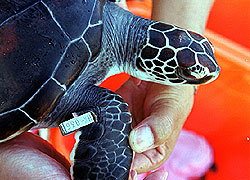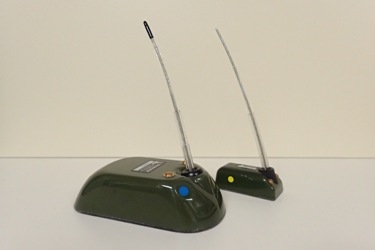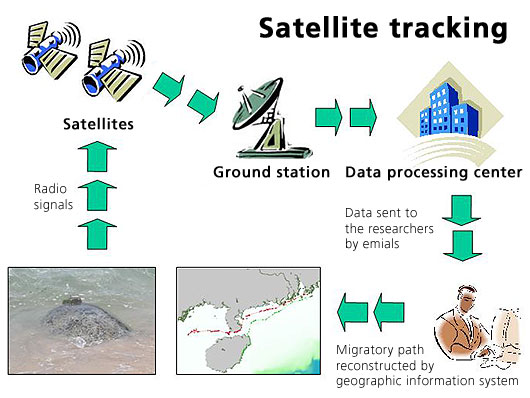|
Satellite tracking
Apart from conserving the Green Turtles nested in Sham Wan, AFCD is also concerned about their migratory movement in the ocean among different countries to better conserve this species.
A simple method to track the migration of sea turtles is to put metal tags on the flippers of the turtles. A unique serial number is usually etched on the tags. However, unless other researchers encounter these tagged sea turtles along the migratory routes or in their foraging sites, the tags would only serve to let us know whether the turtles have visited the nesting site before.
 |
| Metal tag for sea turtles |
The recent advance of satellite tracking technology offers a more versatile and successful approach to trace the movement of migratory animals, such as waterbirds, sea turtles and marine mammals. Satellite transmitters should be waterproof, sturdy but light weight. Tansmitters would be fastened on the carapace with polyester resin and strengthened with glass fiber cloth. Polyester is a turtle-safe resin which generate a much lesser amount of heat during curing than many other polymers.
|
| |
 |
| Satellite transmitter for sea turtles |
The radio signals emanating from the transmitter would be picked up by satellites. Upon receipt of the signals, the ground stations will work out the geographic coordinates of the transmitter together with other data recorded, e.g. the number of dives, the average of dive time and water temperature, and send the data to the researchers by emails. With the chemical attack of ultra-violet light and salt water on polyester resin and collision with rocks and other obstacles at the sea bottom, the transmitter will be detached from the turtle at a later stage.
|
 |
| Mechanism of satellite tracking |
In one particular example, AFCD employed the technology to track two of the green turtles that nested in Sham Wan. They reached their respective foraging grounds in Wanning City of Hainan Island and Dao Beach Long Vi, a small island in the marine protected area in Vietnam, after nesting in Sham Wan.
The finding of one of the satellite trackings was published in Marine Turtles Newsletter Issue 102.
|

